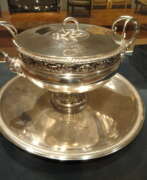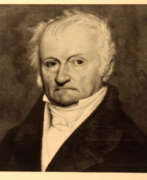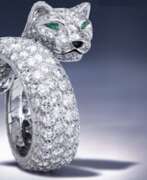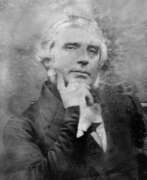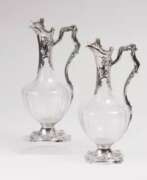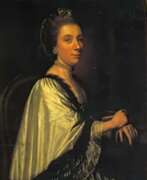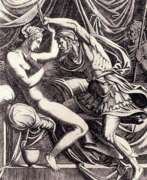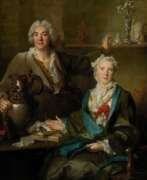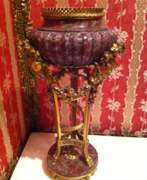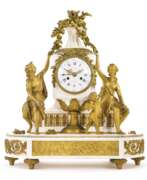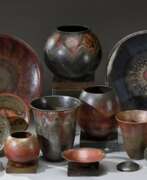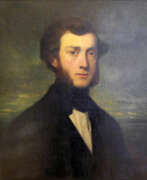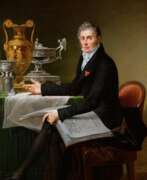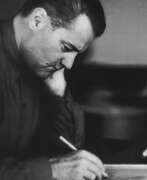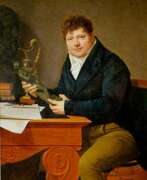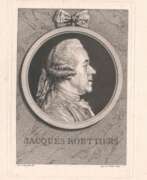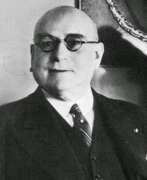Jewelers France
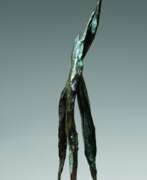

Helen Ashbee is a British artist, sculptor and jeweller. Daughter of renowned architect, designer and social reformer Charles Robert Ashbee.
Helen Ashbee was a textile designer and after the death of her husband, Italian painter Francesco Cristofanetti, she finds her real business in Paris - 'abstract sculpture' and related jewellery, for which she always did many preparatory drawings.


Suzanne Belperron was an influential 20th-century jewellery designer based in Paris. She worked for the Boivin and Herz jewellery houses before the outbreak of World War II. Subsequently, she took over the Herz company, renaming it Herz-Belperron. Belperron had many important client, from royalty, arts and show business on both sides of the Atlantic.
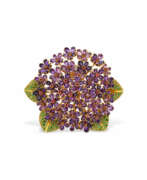

Jules René Boivin was a French jeweller, born in Paris in 1864. He began his career as a jeweller as an apprentice to his brother Victor, and soon excelled in creating small boxes and inlaid metalwork. His talent was not limited to craftsmanship - he had a unique sense of design and excelled at drawing on both paper and metal.
In 1890, Boivin decided to set up his own business and acquired several workshops. He became in demand with jewellery houses but also worked with private clients, creating unusual jewellery inspired by nature, from real animals to mythological creatures. In 1900 he moved to new premises and began trading in antique jewellery. Sadly, his life was cut short at the front in 1917 when he was just 53 years old.


Pol Bury was a Belgian sculptor and artist, celebrated for integrating movement into his sculptures and pioneering the kinetic art movement. Born on April 26, 1922, Bury began as a painter in the Jeune Peintre Belge and the COBRA groups, later transitioning to sculpture. His most renowned work, the fountain-sculpture 'L'Octagon', is a highlight in San Francisco. His innovative art was acknowledged when his work was auctioned at Christie's in 2008, recognizing the unique nature of his contributions to art.
Pol Bury's creations can be found in permanent collections, like that of the Chelsea Art Museum, amongst others.
.
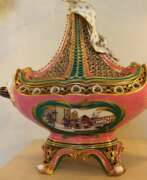

Jean-Claude Chambellan Duplessis was a goldsmith, sculptor and ceramics modeller, bronze-founder and decorative designer working in the Rococo manner. He served as artistic director of the Vincennes porcelain manufactory and its successor at Sèvres from 1748 to his death in 1774 and as royal goldsmith (orfèvre du Roi) from 1758 to 1774.


Patrick Dupré is a French op-art and kinetic artist.
While working for the aluminum company Pechiney in Paris in 1964, he created his first work "Skyscraper" on aluminum plate using rubber, ink, sharpener, blade and Shabu knife, and in the 1970s he already developed his own technique of etching on aluminum foil. During the same years, Dupre also invented a new method of industrial engraving on silver, gold and metal bowls. He created art prints by hand, engravings on copperplate, gravure prints and etchings on drypoint. Since 2012, Dupre has produced Op-Art jewelry based on his work and lives in the French countryside.
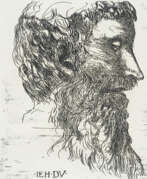

Jean Duvet was a French Renaissance goldsmith and engraver, now best known for his engravings. He was the first significant French printmaker. He produced about seventy-three known plates, that convey a highly personal style, often compared to that of William Blake, with very crowded compositions, a certain naive quality, and intense religious feeling. According to Henri Zerner, his work has a "freedom and immediacy that have no equivalent in Renaissance printmaking".


Rei Kawakubo is a Japanese fashion designer based in Tokyo and Paris. She is the founder of Comme des Garçons and Dover Street Market. Although not formally trained as a fashion designer, Kawakubo did study fine arts and literature at Keio University. After graduation she worked in the advertising department at the textile company Asahi Kasei and she went on to work as a freelance stylist in 1967. Two years later, she began to design and make her own clothes under the label Comme des Garçons. In 1969, she established her own company, Comme des Garçons Co. Ltd in Tokyo and opened up her first boutique there in 1975. Starting out with women's clothes, Kawakubo added a men's line in 1978. Three years later, she started presenting her fashion lines in Paris. Comme des Garçons specialises in anti-fashion, austere, sometimes deconstructed garments. Kawakubo likes to have input in all the various aspects of her business, rather than just focusing on clothes and accessories. She is greatly involved in graphic design, advertising, and shop interiors believing that all these things are a part of one vision and are inextricably linked.
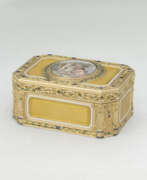

Charles Le Bastier, son of a Paris mercer of the same name, was apprenticed on 3 October 1738 at the age of 14, to Gabriel Vougny, marchand-orfèvre-joaillier. With the sponsorship of Jean Moynat, himself a noted gold box maker, Le Bastier became master goldsmith on 20 December 1754. He worked from the same premises in the rue Thévenot, near the rue St-Denis, until last recorded in 1783. Le Bastier was a successful and prolific maker of gold boxes who also supplied other retailers such as Jean-François Garand and Grancher of Du Petit Dunkerque, whose name or shop name appear engraved on the rims of several of Le Bastier's boxes. In the special tax list of 1774, he was listed 9th in order of the importance of his business. Since a number of Le Bastier's boxes survive in various collections (most notably in the Louvre and the Thurn und Taxis Museum, Regensburg), it is possible to trace the progression of his work from the earliest silver boxes with coloured gold ornament through a series of richly chased but comparatively plain gold boxes to the almost immediately recognisable gold and enamel boxes of his maturity.
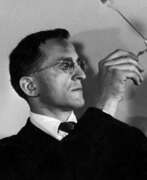

Serge Mouille was a French industrial designer and goldsmith. He is best known for his light fixture designs.
Serge Mouille remains famous primarily for his minimalistic designs and use of uniformly black painted metal materials. His wall-mounted spot light fixture with articulated arms is typical for his discrete, yet highly functional designs.
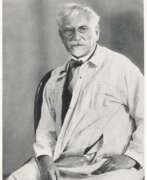

Alfons Maria Mucha, a Czech Art Nouveau painter and decorative artist, was celebrated for his innovative contributions to art, particularly his distinctive style that became synonymous with the Art Nouveau movement. Born in 1860 in the Moravian town of Ivancice, Mucha exhibited artistic talent from a young age, initially showing a proclivity for drawing and music, which were closely intertwined in his perception of creative expression. Despite early financial and educational hurdles, Mucha's passion for art led him to Vienna and subsequently Munich, where he honed his skills and absorbed influences that would shape his future work.
Mucha's career took a pivotal turn in Paris, where his poster for the actress Sarah Bernhardt's play "Gismonda" gained him immediate fame. This partnership with Bernhardt catalyzed a prolific period during which Mucha produced a flurry of artworks, including paintings, posters, and illustrations, as well as designs for jewelry, wallpaper, and theatre sets. His works are characterized by their depiction of beautiful young women in flowing robes, surrounded by lush, natural elements and often featuring pastel colors—a stark contrast to the bold hues preferred by his contemporaries.
Despite his commercial success, Mucha aspired for his art to convey a deeper spiritual message rather than merely adhering to the trendy Art Nouveau style. This led him to undertake projects that were more personal and culturally significant, such as "The Slav Epic"—a series of paintings celebrating Slavic history. Mucha's legacy is not only preserved in his diverse body of work but also in his influence on the aesthetic values of craftsmanship and design.
Collectors and experts in art and antiques continue to venerate Mucha for his unique ability to blend artistic beauty with cultural expression. His works, which are housed in museums and galleries worldwide, remain a testament to his vision and creativity.
For those keen on exploring the world of Alfons Maria Mucha further and staying updated on new sales and auction events related to his work, signing up for updates is an excellent way to ensure you never miss an opportunity to appreciate or acquire pieces related to this iconic artist. This subscription is tailored for collectors and art enthusiasts, focusing solely on new product sales and auction events concerning Mucha's legacy.


Charles-Nicolas Odiot was the outstanding French silversmith of his generation; the son of Napoleon's silversmith, Jean-Baptiste-Claude Odiot, he inherited the direction of the extensive family workshops in 1827, as techniques of factory production were extended in the trade. He excelled in the revived Rococo style, and became the purveyor by appointment to Louis-Philippe of France and to other members of the family of Orléans.


Lev (Léon, Leff) Alexandrovich Schultz was a Russian and French artist, illustrator, jeweller, inventor, philosopher and publicist.
The works of Lev Alexandrovitch Schultz were exhibited dozens of times over a 50 year career and he willingly took part in many exhibitions. From a certain time Shultz exhibited mainly his famous inlays, and in the last decade of his life again his charcoal drawings, pastels and paintings.
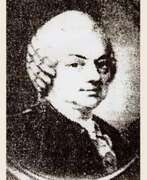

Georg Friedrich Strass was an Alsatian jeweler renowned for his invention of imitation gemstones, particularly the rhinestone, which is called "strass" in many European languages. Born on May 29, 1701, near Strasbourg, Strass made significant contributions to the field of jewelry by discovering a specific type of crystal in the Rhine River that he used to craft these imitation gems. His innovative techniques included using bismuth and thallium mixtures to enhance the refractive qualities and altering colors with metal salts. Strass's simulated gemstones were so convincing that he established the concept of "simulated gemstone" to categorize them.
By 1730, Georg Friedrich Strass had launched his own business, focusing on creating artificial diamonds, and his exceptional work led to him being honored as the "King's Jeweler" in 1734. His creations were highly sought after, especially at the court of King Louis XV of France, where he maintained a significant market presence for his artificial gems. His success in the industry allowed him to retire comfortably at the age of 52.
For collectors and art and antiques experts, Georg Friedrich Strass's legacy is a testament to the ingenuity and craftsmanship of the 18th century, offering a fascinating glimpse into the history of jewelry making. His work remains influential, illustrating the blend of art, culture, and history in the realm of jewelry design.
If you are interested in the intersection of art and innovation as exemplified by Georg Friedrich Strass's work, consider signing up for updates on new product sales and auction events related to his inventions. This subscription will provide you with insights into the ongoing relevance and appreciation of Strass's contributions to jewelry and art.
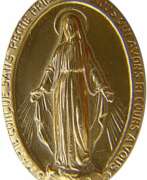

Adrien Vachette was a French jeweler of the 18th and 19th centuries, best known as the creator of the so-called Wonderful Medallion.
Vachette was one of the most famous and prolific craftsmen of his generation. He was appointed court jeweler and supplier to the court of King Louis XVIII. Gold, tortoise shell, enamel, precious stones and ornamental stones were used extensively in the creations of Vachette, particularly in the many precious snuffboxes that were in fashion at the time.
However, he became famous at a very advanced age, when he was almost 80 years old. Paris at the time was experiencing a cholera epidemic and a period of political instability. The Archbishop of Paris, Iasent-Louis de Quelan, had the idea of solving these problems by a miracle. At his behest, Vachette designed a "miraculous medallion" depicting Our Lady. Between 1832 and 1836, more than two million copies were distributed. At the same time, Archbishop Kaelan and his clergy were active in the fight against cholera. All in all, this contributed to the growth of religiosity and respect for the church in France, and the marvelous medallions of Vachette's design continue to be minted and distributed in many Western countries to this day.
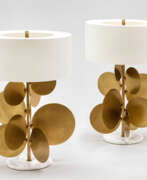

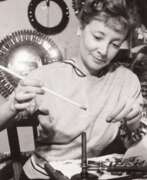

Line Vautrin is a French artist, jeweller and designer.
Her work ranges from jewellery to objects such as mirrors, trays and boxes. Devoted to experimentation, she opened A.D.A.M. (Association for the Development of Handmade Arts), a craft school where she taught metalwork and jewellery making and also sold the raw materials she used in her practice.
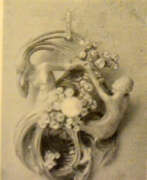

Henri Vever was one of the most preeminent European jewelers of the early 20th century, operating the family business, Maison Vever, started by his grandfather. Henri was also a collector of a broad range of fine art, including prints, paintings, and books of both European and Asian origin. By the 1880s, Vever became one of the earliest Europeans to formally collect Japanese ukiyo-e woodblock prints.


